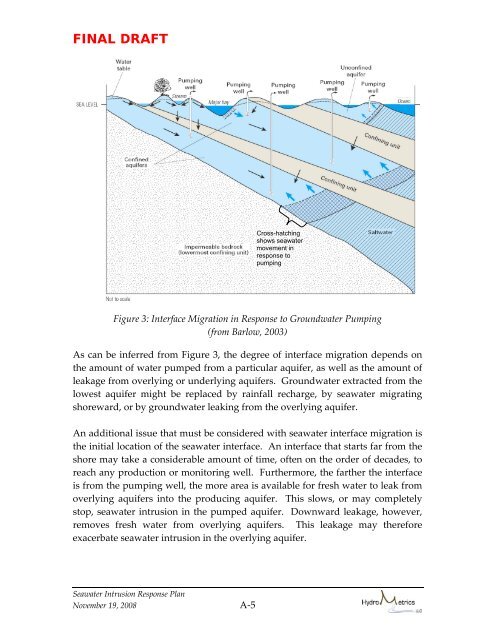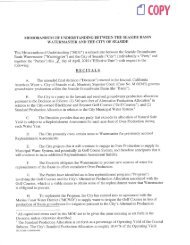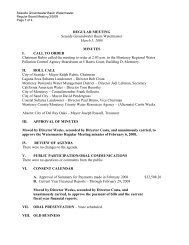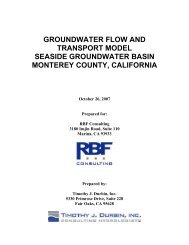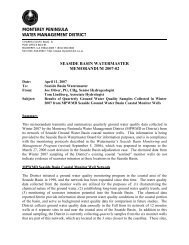indicators of seawater intrusion - Seasidebasinwatermaster.org
indicators of seawater intrusion - Seasidebasinwatermaster.org
indicators of seawater intrusion - Seasidebasinwatermaster.org
- No tags were found...
You also want an ePaper? Increase the reach of your titles
YUMPU automatically turns print PDFs into web optimized ePapers that Google loves.
FINAL DRAFTCross-hatchingshows <strong>seawater</strong>movement inresponse topumpingFigure 3: Interface Migration in Response to Groundwater Pumping(from Barlow, 2003)As can be inferred from Figure 3, the degree <strong>of</strong> interface migration depends onthe amount <strong>of</strong> water pumped from a particular aquifer, as well as the amount <strong>of</strong>leakage from overlying or underlying aquifers. Groundwater extracted from thelowest aquifer might be replaced by rainfall recharge, by <strong>seawater</strong> migratingshoreward, or by groundwater leaking from the overlying aquifer.An additional issue that must be considered with <strong>seawater</strong> interface migration isthe initial location <strong>of</strong> the <strong>seawater</strong> interface. An interface that starts far from theshore may take a considerable amount <strong>of</strong> time, <strong>of</strong>ten on the order <strong>of</strong> decades, toreach any production or monitoring well. Furthermore, the farther the interfaceis from the pumping well, the more area is available for fresh water to leak fromoverlying aquifers into the producing aquifer. This slows, or may completelystop, <strong>seawater</strong> <strong>intrusion</strong> in the pumped aquifer. Downward leakage, however,removes fresh water from overlying aquifers. This leakage may thereforeexacerbate <strong>seawater</strong> <strong>intrusion</strong> in the overlying aquifer.Seawater Intrusion Response PlanNovember 19, 2008 A-5


